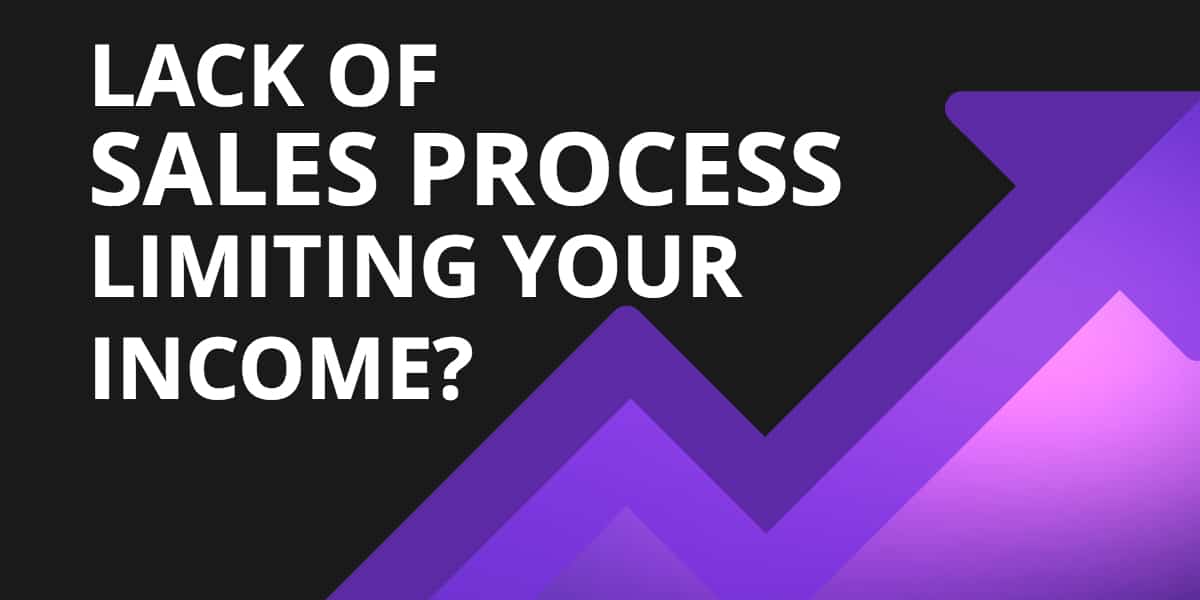 Acquiring a new client is tough when you’re a service professional. After you’ve identified a lead, you have to walk him through your sales process and sell your services. Besides those big picture things, you have to also:
Acquiring a new client is tough when you’re a service professional. After you’ve identified a lead, you have to walk him through your sales process and sell your services. Besides those big picture things, you have to also:
- contact him initially
- schedule meetings
- have the meeting and ask good questions
- follow up on questions after the meeting
- determine his needs
- determine the value you can bring him
- write a proposal
- share the proposal with him
- get approval
- send an invoice
- get paid
And those are just the basics before you can start working with him. There can be many more steps in your process as well. And your sales process tells your lead/prospect how you are going to do business with him.
Do you have a clear sales process in place that can help you do things like:
- Remember when to call him back?
- Get calls scheduled?
- Confirm receipt of the proposal?
- Communicate with him if you haven’t heard back?
- Share important facts about your services along the way?
These questions are just a few of the ones you have to address. Your sales process should be repeatable. You should be able to delegate parts of it to a team member and still maintain your brand’s communication style. And, yes, you should be able to tweak it when something changes or you learn that something needs to be added or removed.
How you manage these steps can be the difference between winning and losing a client. At my last job, we did everything right with one client who we really wanted to work with…. except to confirm he received the proposal after we had emailed it to him after the presentation. We didn’t discover the problem until the client had chosen another vendor. Needless to say, one simple email could have alerted us to the problem early enough to still win the business.
Write Down the Sales Process Steps
The first step to developing a strong sales process is to write down all the steps. Start with how the lead comes in, then how and when you communicate back. So, “When a ‘please contact me’ form comes through email, within 4 working hours, contact the person back via email.” (My rule is always to respond back to the person the way they contacted you – it’s usually a good indicator of what type of communication they prefer: phone or email.)
Go through the entire process – in detail, like you were telling an assistant how to do it for you because you were going to be away for a couple of weeks – down to the last step (usually): “Receive payment.”
Make sure you identify how you are remembering to do these things and what type of programs you might use to streamline your process. Examples:
- Set a reminder in Highrise to follow up 2 days after initial contact.
- Schedule an initial meeting with the prospect through Calendly. (You can even include the specific link used to access the available schedule.)
- Send proposal via HelloSign.
- Email prospect one day after sending the proposal, to confirm receipt.
- Send an invoice through QuickBooks Online.
- Deposit check through the mobile app for BBVA.
- Open a project in Basecamp.
You get the picture. It should be very detailed, very specific, and step-by-step.
Create Email Templates
The touch points throughout a sales process let you communicate your personality, style, brand, and what it is like to work with you. You can include tidbits like, “We are a virtual company, which means no one you work with will ever be stressed out before they start on your project because they’ve been sitting in traffic.” In that one sentence, I conveyed that the company doesn’t have a physical location that the client can show up to, that there is a benefit to that type of business to the client, and I’ve shown a bit of a sense of humor.
So, after you complete the process, go back through and start setting up email templates for each time you communicate. You should always modify the specific email for individual prospects to make sure it is personal and appropriate but have some standard language that you can use as a default.
There is no sense reinventing the wheel every time you want to say, “You should have just received the proposal via HelloSign. Please check your junk mail if it is not in your inbox. We will always send anything that requires a signature via this method in order to keep our workflow green and paperless.”
What are some steps you’ve added to your sales process that help you stay in communication with your prospects?

Leave a Reply